You have connected all the components and parts perfect for your build and you are good to go but the only problem is your RAM hasn’t arrived yet.
You are in a hurry to test out the build so you are probably wondering this:
Will the motherboard turn on without RAM?
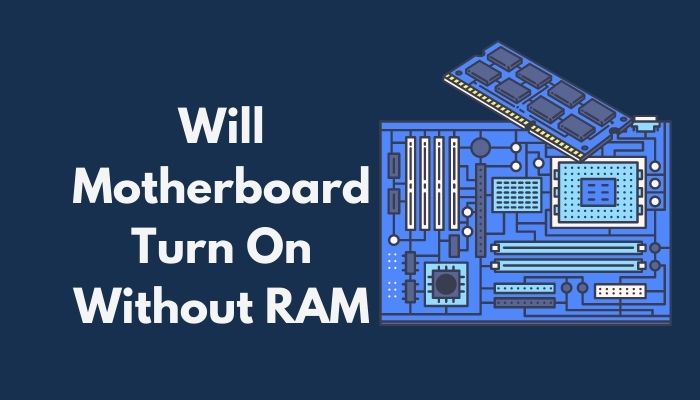
You don’t need to look any further because I, as a tech enthusiast who’s been building PCs his entire life, have written this article to answer all the questions you have and clear every doubt you could possibly have.
Just grab a coffee and keep yourself relaxed while you are learning some new things from this article.
What Will Happen If We Remove RAM From The Motherboard?
Removing your RAM from the motherboard while your computer is running can be extremely disastrous for your build. Your memory chips will get fried and since the current is flowing, you will see sparks that will damage your system.
You probably already know that the motherboard is the central or most important component in any build since it provides connections between all the other components in your system.
You should also know by now that a CPU is equally important because it processes all the inputs to the computer and provides the necessary output.
What you probably don’t know is that the RAM is also a very important part of your build. Think about how your CPU works. Your CPU needs a dedicated place to store temporary data while it’s processing.
That place is what we call Random Access Memory or RAM. I hope you understand now how important RAM really is in a computer.
This is exactly why you won’t be able to get your computer to turn on if there is no RAM present in the system. Your computer needs to store some temporary information in the RAM and if it can’t find that location, it will simply turn off.
While buying the best RAM for your PC, pick RAMs of high RAMs of high frequency and low CAS latency.
What To Do If Motherboard Can’t Detect RAM?
There’s quite a lot of reasons why your motherboard is having issues with detecting the RAM. However, the majority of users reported that their issue came from installing an unsupported RAM inside the motherboard.
It’s rare but sometimes your RAM might be a lot faster than what your CPU can handle. That happens when your CPU bottlenecks the RAM. The good news is you can simply fix this by just replacing the RAM.
Also, check out our expert’s recommended best Corsair RAM.
In addition to that, your motherboard also comes with a limited maximum RAM, which includes every RAM slot together.
For instance, let’s say your motherboard supports a maximum of 16GB RAM. This means that each of the 4 RAM slots available supports up to 4GB RAM.

Why am I telling you this? Well, if you insert 8 GB RAM into any one of these RAM slots, your motherboard won’t be able to detect the RAM as it’s not supported.
Apart from this, you should also recheck your installation to make sure nothing goes wrong with it. Despite the fact that the installation process is very simple, many people make mistakes during the installation.
While installing the RAM, double-check the seating and make sure you hear an audible click when you insert the RAM. If you don’t hear the click, take it out and try again.
After trying all these, if you still have no luck, then I believe the issue might be because your DIMM is faulty. The DIMM or Dual In-Line Memory Module is printed on your circuit board and contains a series of dynamic random access memory integrated circuits.
You can find out whether your memory stick is the issue or not by running a very simple program called MemTest86 which is supported on both Windows and Linux. If this is indeed the issue, you will need to replace your DIMM to fix the motherboard not detecting RAM.
What Happens If I Run Out Of RAM?
The simple answer to that question is that your computer will start to work inefficiently if it doesn’t have enough RAM. Your computer will start using the hard disk as VRAM if RAM becomes insufficient which will cause performance drops and slow response times.
However, many old PCs don’t support VRAM so when you run out of RAM on those systems, you will probably end up seeing random freezing. During extreme cases, your computer might also start rebooting.
In some cases, you will be presented with a blue screen of death instead of a simple reboot.

You should notice that your computer’s performance after the reboot is much better but over time, as the RAM becomes full, the performance will start degrading.
A large capacity RAM is also needed if you hate lags or stutters when you are doing something important.
This is why people mostly look for RAM capacity whenever getting a new computer.
So, how much RAM do you really need? Well, 4GB RAM used to be enough for simple usage but nowadays, you actually need a minimum of 8GB RAM in order to use your PC for normal web browsing or word processing, without any issues.
If you are planning on playing a lot of games on your computer, you need at least 16GB of RAM for a lag-free experience.
FAQ
Does removing RAM delete anything?
Removing and replacing RAM has no effect on the data that is stored on the hard drive. The temporary files that are created when the RAM is being used are mostly deleted from the RAM when it’s shut down so there’s no way RAM could delete anything.
Can you change RAM with the computer on?
No, you should never think about replacing the RAM while your computer is still powered on and running. Doing so will probably damage several of your other components. That’s why you need to remember to always power off your PC before installing RAM.
Will changing the motherboard affect Windows 10?
Yes, there will be some issues. Whenever you change some components like the motherboard, processor, or hard drive, the system might end up failing to recognize the computer. You will have to fix this by reinstalling Windows 10.
Does the motherboard have memory?
Yes, your motherboard does have memory, but it doesn’t store any of your personal files. Your motherboard has a unique storage type that is faster than your standard HDD and it’s used for system memory only.
Final Thoughts
To sum it all up, there’s no workaround or anything that will help you turn on the motherboard without any RAM available. You don’t need just any RAM, you need a very good, fast, and high-capacity RAM for optimal performance from your build.
I’m really hoping you don’t have any more confusion on this but if you do, you are always free to reach us. Don’t forget to check our website anytime you have a problem with your build.

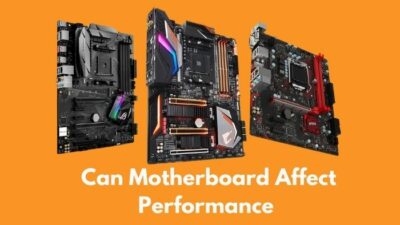
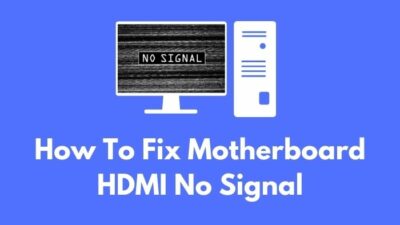
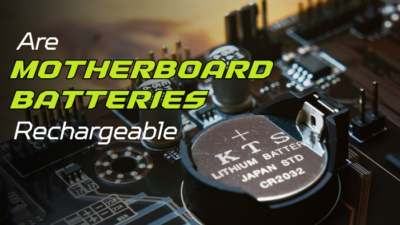
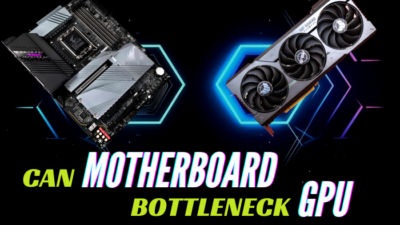
This is an odd. Also I believe in your article, however, yesterday my pc got stock open, no display onboard. To troubleshoot, I first replace the cpu’s termal paste, trying to turn on but still no display, try to clear cmos but wont work and here is the odd one, I try to remove all components leaving cpu, board are plug and yet still turning on but no display no beep but still running on. Just want to clear that it really turn on fans is running it doesn’t shut down just fully running but no display, no beep which makes it odd.
Spec:
ryzen pro 4650g
b450m pro 2 tuf
16gb
550w bronse
250gb nvme
500gb wd